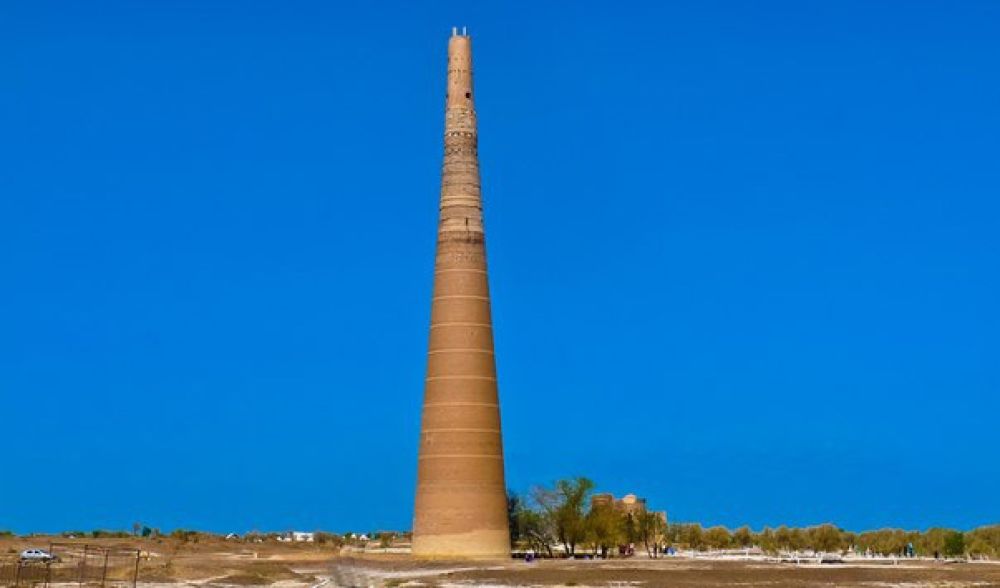

As one of the most prominent historical landmarks in Turkmenistan, the Kutlug Timur Minaret has stood as a testament to the region’s rich cultural tapestry and Islamic architecture since its construction in the 14th century. Located in the ancient city of Konye-Urgench, now part of modern-day Dashoguz, this towering structure has attracted scholars, archivists, and travelers from around the world.
The minaret was named after its patron, Kutlug Timur, who was a governor under the Mongol Golden Horde empire. Despite its age, it remains one of the tallest minarets in Central Asia, measuring an impressive 60 meters in height. The site is part of the historical area of Urgench, which was once the capital of Khwarezm, a prosperous region that flourished before being decimated by the Mongol invasions in the 13th century.
Over the centuries, the minaret has endured as a symbol of the Islamic world and has witnessed numerous changes in power and the steady flow of history. Recognized for its cultural importance, the minaret and its surrounding ancient ruins were designated as a UNESCO World Heritage Site in 2005, under the name "State Historical and Cultural Park 'Ancient Merv' ".
Tourism in the Dashoguz region and the site of the Kutlug Timur Minaret has evolved over the years. Initial visitations were primarily scholarly in nature, with historians and archaeologists drawn to the ancient ruins of Konye-Urgench. Public awareness and tourism saw a gradual increase as Turkmenistan moved towards independence from the Soviet Union in 1991, and the country started to open up to international visitors.
Over the years, the government of Turkmenistan has made strides in promoting its historical sites as major tourist attractions. Efforts to maintain and restore the minaret have made significant progress, ensuring that it remains a testament to the architectural prowess of the Khwarezm civilization. Additionally, with the inclusion of the site in the UNESCO World Heritage list, global recognition has increased, attracting more international tourists to the region.
As of recent years, tourism trends have been shifting with an increasing focus on sustainable and experiential travel. Visitors to the Kutlug Timur Minaret are now looking for immersive experiences that allow them to connect with the region’s history. This has led to the growth of guided tours that offer historical insights and storytelling, providing tourists with a deeper understanding and appreciation of the site.
Tourist facilities and services in the Dashoguz area have also improved, with better accommodation options, transportation, and visitor infrastructure to cater to the needs of international and domestic travelers alike.
In conclusion, the Kutlug Timur Minaret stands not just as a towering spire on the plains of Dashoguz but as a beacon drawing attention to Turkmenistan’s vast historical and cultural wealth. As both the country and the world look towards a future of travel that celebrates history and heritage, the Kutlug Timur Minaret will undoubtedly continue to play a crucial role in Turkmenistan’s growing tourism industry.